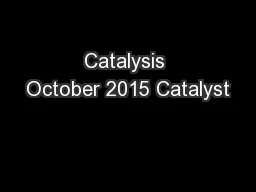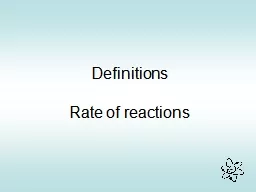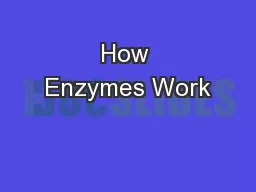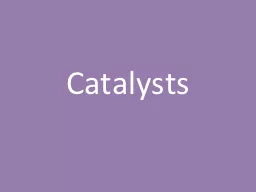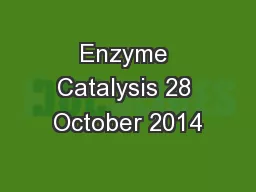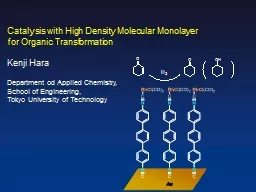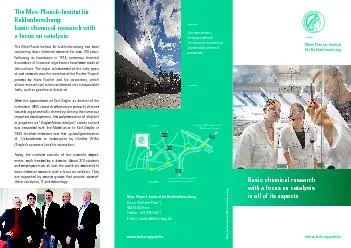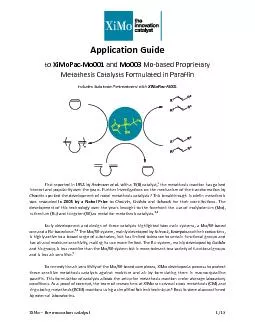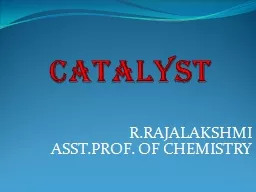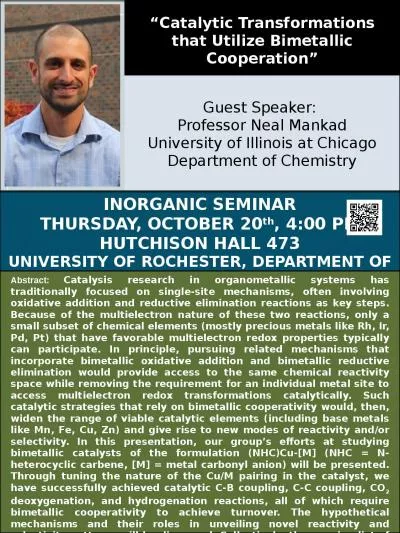PPT-Catalysis October 2015 Catalyst
Author : conchita-marotz | Published Date : 2018-11-08
A substance that speeds up a reaction without being consumed itself How By providing a new pathway for the reaction one with a lower activation energy Catalyzed
Presentation Embed Code
Download Presentation
Download Presentation The PPT/PDF document "Catalysis October 2015 Catalyst" is the property of its rightful owner. Permission is granted to download and print the materials on this website for personal, non-commercial use only, and to display it on your personal computer provided you do not modify the materials and that you retain all copyright notices contained in the materials. By downloading content from our website, you accept the terms of this agreement.
Catalysis October 2015 Catalyst: Transcript
Download Rules Of Document
"Catalysis October 2015 Catalyst"The content belongs to its owner. You may download and print it for personal use, without modification, and keep all copyright notices. By downloading, you agree to these terms.
Related Documents

